Paula Petrone: “I want the discoveries and technologies we develop in data science and digital health to improve people’s health in the short term”
Interview with Paula Petrone, head of the Biomedical Data Science Group, a part of the Severo Ochoa programme at ISGlobal
26.10.2021
Interviewer: Yvette Moya-Angeler
Born in Buenos Aires (Argentina) in 1976, Paula Petrone is the daughter of two architects from families of Italian extraction, who encouraged her to discover her calling and feel free to pursue it.
She went to the United States to earn a PhD in biophysics from Stanford University before moving to Switzerland to work as a data science consultant in the pharmaceutical and biotechnology industry. In 2016, she and her family moved to Barcelona, where she did postdoctoral work at the BarcelonaBeta Brain Research Center. She has two children aged 6 and 8 years (“I’d love for you to include that,” she says).
Since December 2020, Petrone has been leading the new Biomedical Data Science group, which forms part of ISGlobal’s Severo Ochoa programme and focuses on harnessing data and advanced analytics to solve complex questions related to human health.
Our conversation took place during Petrone’s lunch break, which she sometimes spends jogging on the beach. She defends this interlude as a fundamental part of her routine: “I get a lot of sun, light and calm from the sea. It puts me in the right mood to think or rest. Our attention is so scattered by all the stimuli we are bombarded with, so I feel it is very important to set aside an hour each day for self-care and reflection.”
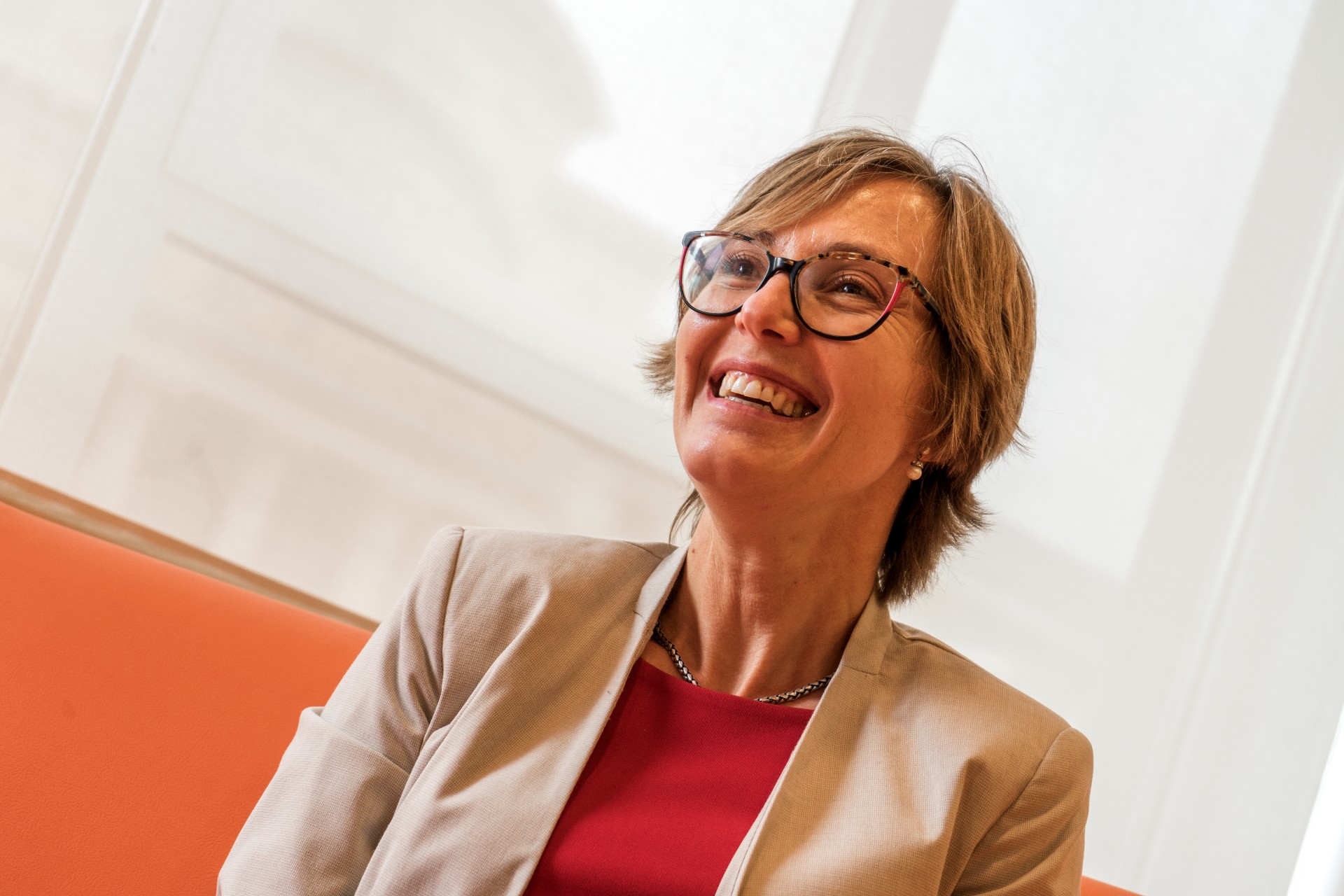
A. Cabrera / ISGlobal
Why did you become a scientist?
When I was very young, I was convinced that I wanted to be an astronaut. I used to write books and stories about space. When I was 18, I got a youth scholarship to visit NASA. Although it was a wonderful experience, I realised that going to space was not my thing. What I liked was scientific research: I wanted to be involved in developing new science, understanding why things happen, why the stars move the way they do. In short, I wanted to know why everything exists. I wanted answers to these questions, so I struggled to choose between studying philosophy or physics.
You ended up choosing physics...
Yes. But again, when I started my degree, I felt that the problems of the heavens were too remote, what with all the problems we have here on Earth! I started wanting to delve deeper into biology. I decided that my field was biophysics, which uses physics to solve biological problems. I wanted to understand proteins and diseases—and find cures for those diseases. I did my PhD thesis in biophysics at Stanford University in the United States. From there, I embarked on a career in the pharmaceutical and biotechnology industry. For more than ten years, my work involved using physics and biology to find new therapies in the private sector. So my background is somewhat different from that of other academic researchers.
For more than ten years, my work involved using physics and biology to find new therapies in the private sector. So my background is somewhat different from that of other academic researchers
How does this difference show?
I have perhaps a more utilitarian view of scientific activity. I am primarily interested in projects that can lead to short-term improvements in medicine and the health care system. I must also admit that I never had the manual dexterity that a biologist or chemist needs to succeed in the laboratory: I would break things and ruin experiments!
Was that a determining factor?
Yes. In a scientific research career, there comes a time when you have to choose between wet lab and in silico research. I was good at mathematics and computing—I started programming when I was very young—so specialising in in silico methods came very naturally to me, since it involved doing experiments with computers, using algorithms to simulate reality.
I was good at mathematics and computing —I started programming when I was very young—so specialising in in silico methods came very naturally to me, since it involved doing experiments with computers, using algorithms to simulate reality
Would you say you have a mathematical mind?
I don’t think so. I really enjoy writing, as well as everything having to do with the humanities and people. Beyond my academic work, I am interested in understanding the impact of artificial intelligence on our daily lives and how it integrates into our personal activities and skills. I am also interested in the ethical issues involved in applying artificial intelligence, especially in medicine. This includes understanding aspects of bias and the limitations of artificial intelligence. I am also interested in raising awareness about these issues.
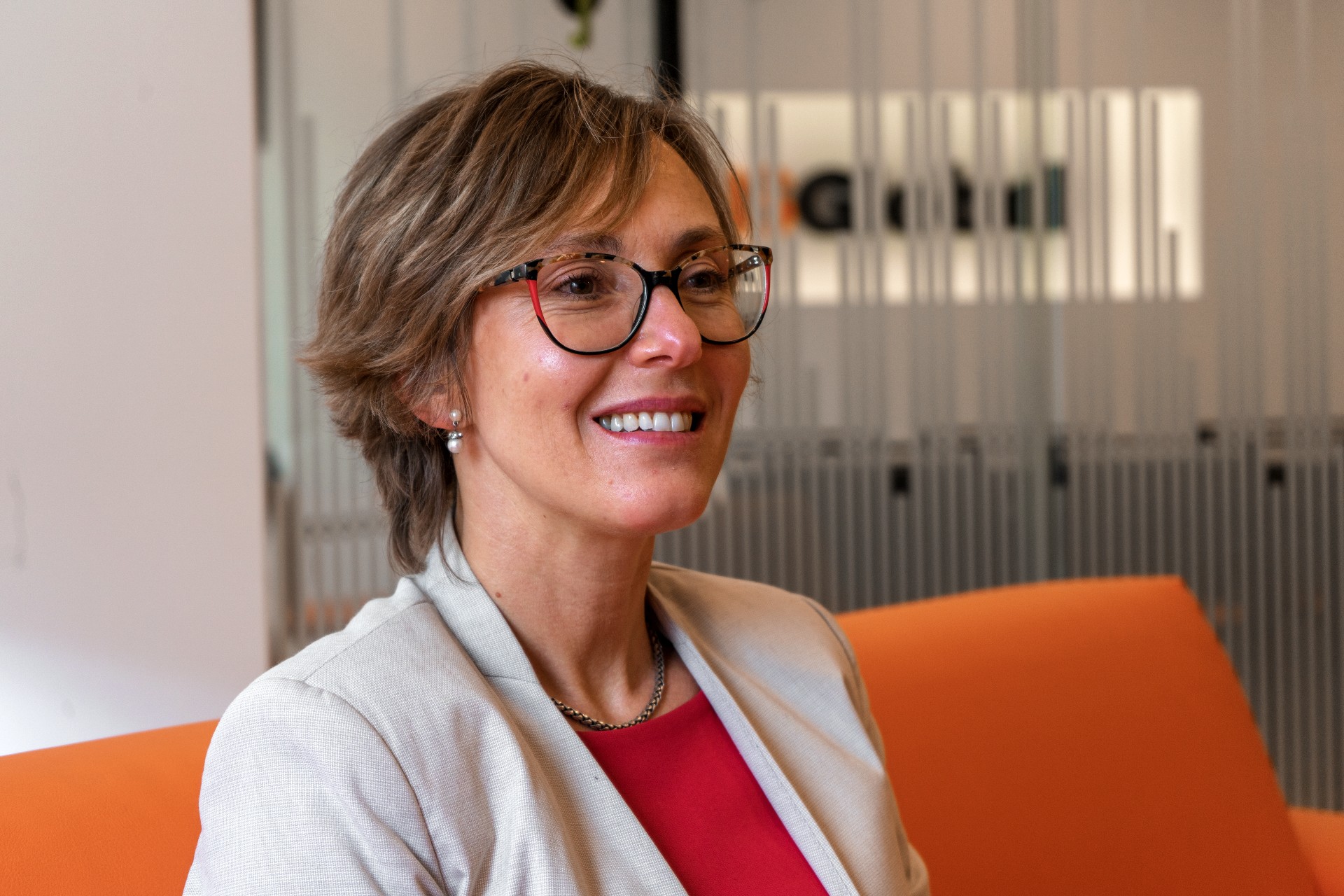
A. Cabrera / ISGlobal
What was your time in the pharmaceutical industry like?
In those years, I was always involved in research and development, which meant applying various data science techniques to integrate huge amounts of data (on proteins, compounds, experiments, etc.) using machine learning, which is an artificial intelligence technique. The goal was to find new drugs. Then I did postdoctoral work at the BarcelonaBeta Brain Research Center and started working with magnetic resonance imaging of the brain to identify patterns that indicate the early onset of Alzheimer’s disease. So my activities and interest as a data analyst started shifting towards clinical matters. For the last five years, I have been working on the integration of data—molecular and chemical data from patient records—which is known as health informatics or biomedical data science.
For the last five years, I have been working on the integration of data—molecular and chemical data from patient records—which is known as health informatics or biomedical data science
Taking the Specificities of Women Into Account
Would you describe this as an emerging field? Are many people qualified to work in this area?
There are many opportunities in the field of data science. Specialised master’s degree courses are starting to spring up. There is a lot of buzz in these areas, but most of the analysts you come across have mainly a generalist background. Biomedical data science, however, is a niche for people whose experience spans the fields of medicine, biology and chemistry, plus data analytics. There are not very many of us.
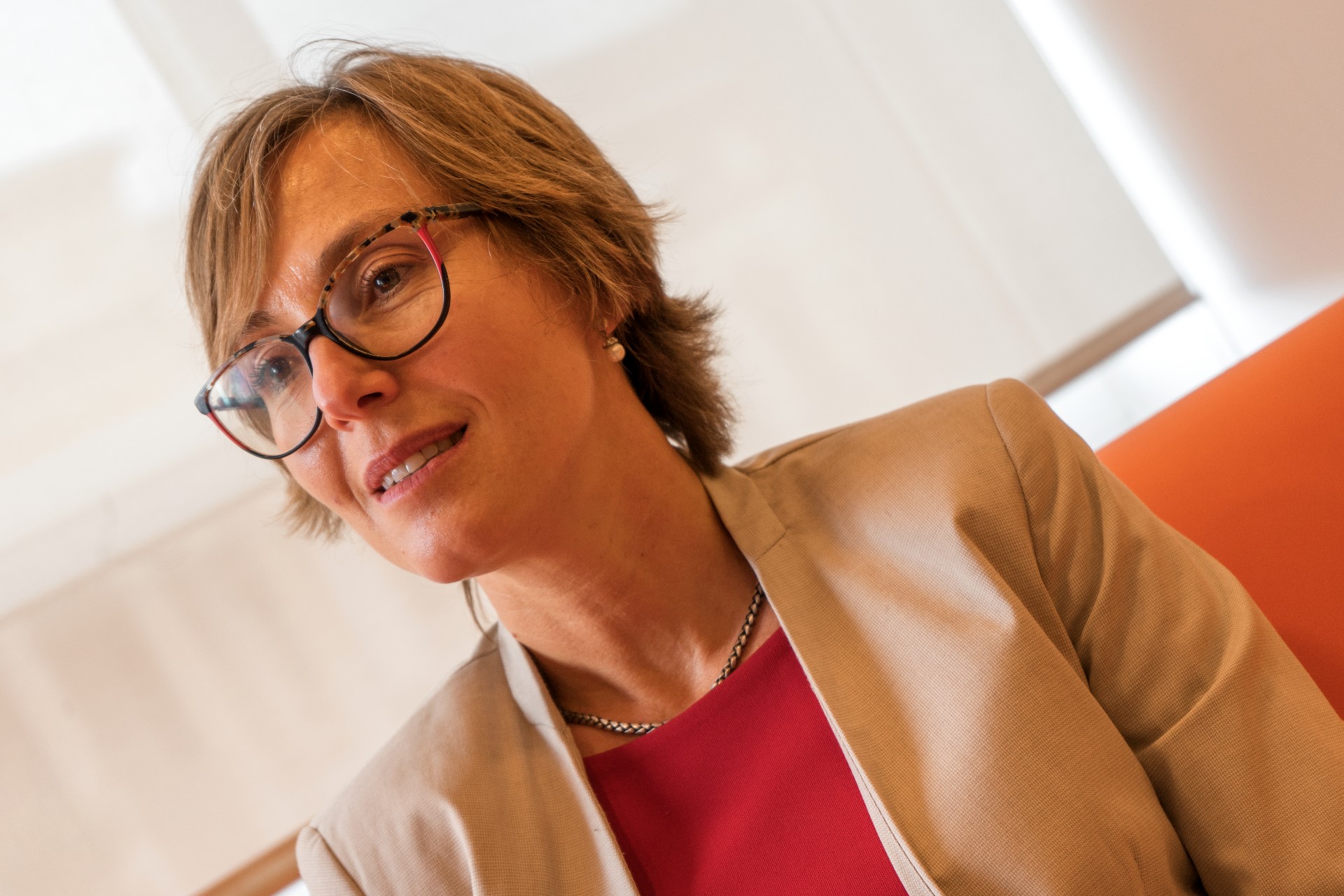
A. Cabrera / ISGlobal
And even fewer women?
There are few women in informatics and data science, but this trend is slowly starting to change. I am involved in outreach to attract women to this field. This year, in collaboration with Karina Gibert, a professor at the Technical University of Catalonia (UPC), I helped to organise the conference Women in Data Science Barcelona, an initiative of Stanford University that involved the participation of ISGlobal and aimed to promote the role of women in scientific and technological disciplines.
For many years, medicine has not actively considered the gender or sex perspective: medical data from study cohorts often do not take into account the sex of the participants. For example, the dates of menstrual periods are often missing; the fact that women’s and men’s immune systems are not the same, especially during menstruation, is disregarded; and variables such as menopause are not taken into account
For many years, medicine has not actively considered the gender or sex perspective: medical data from study cohorts often do not take into account the sex of the participants. For example, the dates of menstrual periods are often missing; the fact that women’s and men’s immune systems are not the same, especially during menstruation, is disregarded; and variables such as menopause are not taken into account. In the field of mental health, it is essential to understand that gender and sex variability exists and that it is important to capture these differences in the databases that will later be used for observational and predictive studies.
In the field of mental health, it is essential to understand that gender and sex variability exists and that it is important to capture these differences in the databases that will later be used for observational and predictive studies
For all these reasons—and to mitigate bias in studies and in the decisions and actions derived from them—it is very important to have diversity in development teams, at both the production and management levels. We also need to encourage new generations to think inclusively and promote more egalitarian study design.
Do you take these variables into account in your studies?
Yes, but the obstacle we encounter is that these variables are often not represented or are missing from databases. Nowadays, the term “big data” is often used in reference to the huge amount of accumulated data that is captured via our mobile phones and digital devices. Ironically, in biomedicine we talk about “data poverty” because either we lack many of the variables that we need for our research or the quality of the data is not adequate for statistical analysis.
Nowadays, the term ‘big data’ is often used in reference to the huge amount of accumulated data that is captured via our mobile phones and digital devices. Ironically, in biomedicine we talk about ‘data poverty’ because either we lack many of the variables that we need for our research or the quality of the data is not adequate for statistical analysis
However, the sex and gender dimension is increasingly becoming a requirement for any well-designed study, especially when it comes to applying for project funding. We are starting to see positive changes!
Trying to Understand
What are you studying at ISGlobal?
We are involved in a very interesting project that is studying the partial effectiveness of the RTS,S vaccine against malaria. This is the first vaccine that has been shown to protect infants and children in clinical studies conducted in Africa. Researcher Dídac Macià, a member of our team, is leading this analytical project in collaboration with the team led by Carlota Dobaño and Gemma Moncunill. Given the complexity of the data, advanced statistical and machine-learning techniques must be used in order to identify the determinants of immunity against malaria and figure out why the vaccine confers better protection to some people than to others.
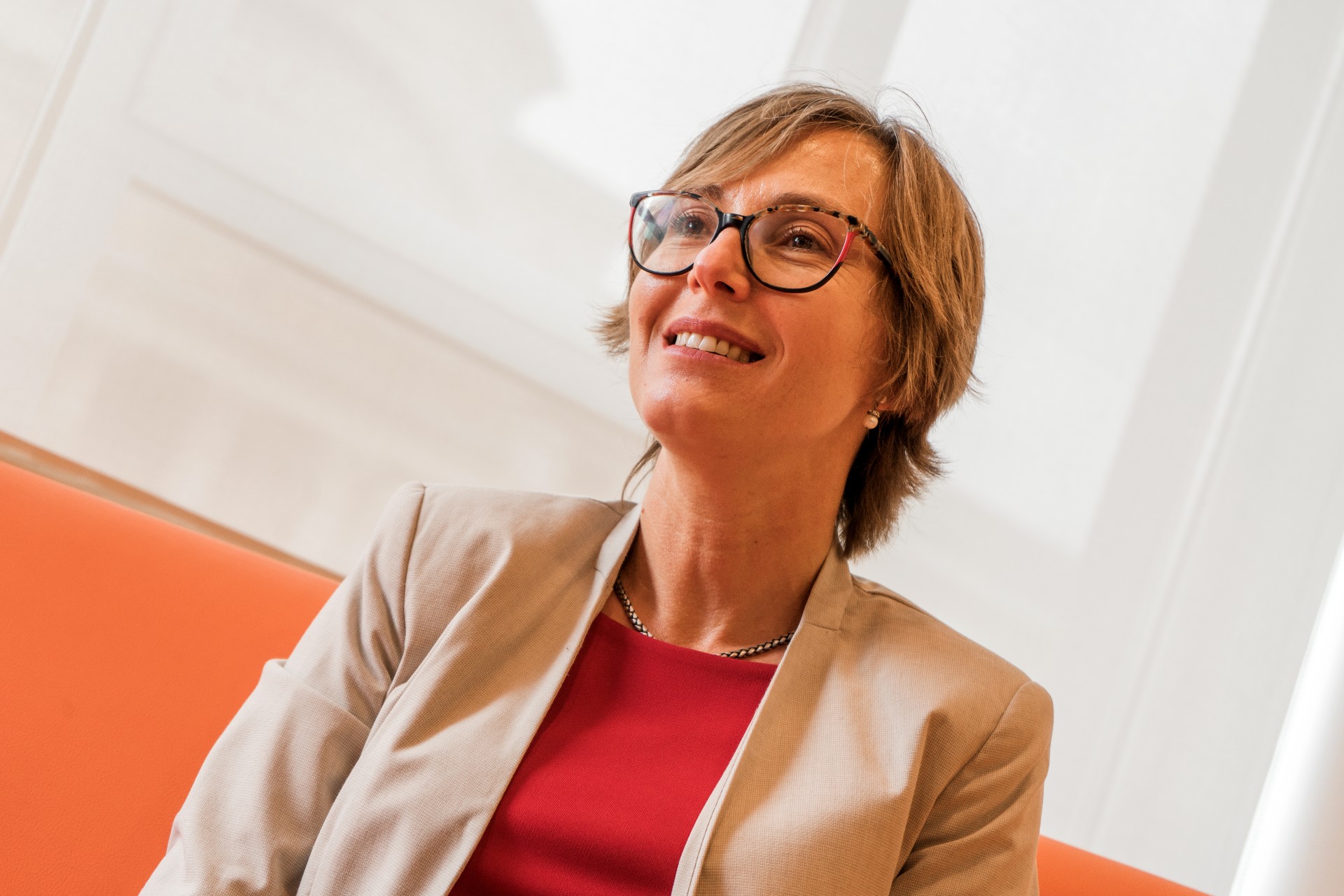
A. Cabrera / ISGlobal
What other lines of research are you working on?
We are investigating the factors involved in human ageing in collaboration with the researcher María Carolina Florian from the Bellvitge Biomedical Research Institute (IDIBELL). We use confocal microscopy image-processing techniques to detect constitutive differences in tissues from young and old mice. We hope to gain a better understanding of the mechanisms of ageing and in the future contribute to the development of drugs that reverse degenerative disorders and improve patients’ quality of life.
It sounds like health informatics projects can be quite varied.
Yes, they are. Another project that we are just getting started on, in collaboration with María Jesús Pinazo and Irene Losada, has to do with Chagas disease, a neglected disease that affects millions of people, mostly in low- and middle-income countries. The latent phase of Chagas disease can last for years. The algorithmic challenge is to identify people who are at risk of complications and could benefit from specific treatment, so that health system resources can be efficiently targeted to those who need them the most.
The latent phase of Chagas disease can last for years. The algorithmic challenge is to identify people who are at risk of complications and could benefit from specific treatment, so that health system resources can be efficiently targeted to those who need them the most
At ISGlobal, we have also started collaborating with psychologist and researcher Ximena Goldberg to identify mental health risk factors as part of the COVICAT project. I find this project fascinating because it integrates a gender perspective, current realities, and clinical and social factors. We are seeking to understand and predict depression and anxiety and to identify vulnerable people who could benefit from therapeutic intervention. The idea is to use analytical techniques to guide early diagnosis on the basis of behavioural data obtained via digital devices and to help these people improve their health through therapy. In other words, we aim to incorporate technology into both the diagnosis and the follow-up of mental health patients.
Isn’t it rather cold to apply technology to mental health problems?
We are starting to see that some people feel more comfortable interacting with an app or a digital device than with other people, especially when there are biases and taboos in an area as private as mental health.
We are starting an ambitious project to develop a platform for assessing travellers’ risk of becoming ill. Through the analysis of datasets on 15,000 travellers, we will be able to identify the people most at risk of contracting infections such as malaria and being hospitalised for those infections, so that preventive and prophylactic measures can be recommended to these individuals
Do you find any of the projects you are involved in to be particularly challenging?
Yes: the exposome project, with Martine Vrijheid and the Exposome Hub colleagues. The aim of this project is to predict how the totality of environmental exposures will affect a person’s development from the prenatal stage until adulthood. In other words, how do the factors we are exposed to in the early stages of life affect us biologically and how can they predispose us to certain diseases? In this field, the postdoctoral researcher Nikos Stratakis is leading a study of the environmental and biological determinants of childhood obesity.
Additionally, in collaboration with Jose Muñoz, head of the International Health Service at Barcelona’s Hospital Clínic, we are starting an ambitious project to develop a platform for assessing travellers’ risk of becoming ill. Through the analysis of datasets on 15,000 travellers, we will be able to identify the people most at risk of contracting infections such as malaria and being hospitalised for those infections, so that preventive and prophylactic measures can be recommended to these individuals.
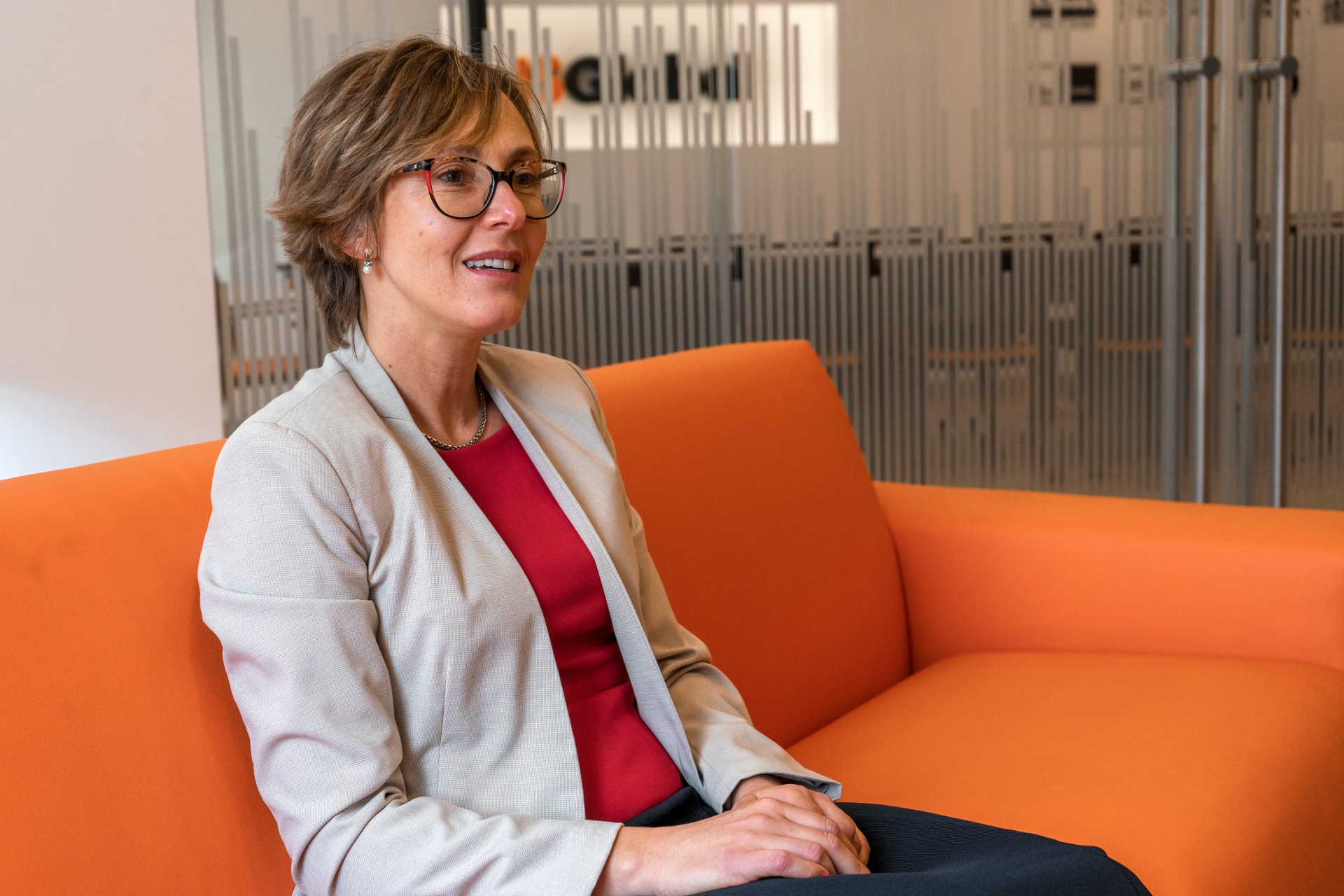
A. Cabrera / ISGlobal
Two Worlds Collide: Academia and Industry
You’ve been at ISGlobal for nearly a year now. What was it like to join the organisation?
I felt very welcome and warmly received by my colleagues. I am surprised and delighted by the number of synergies and collaborations that have sprung up. So many different groups have approached me to see how we can integrate data science into their projects. I am very interested in collaborating with them, because I learn something new from each one. In short, data scientists are like the drummers in a rock band. It doesn’t make much sense for us to make music alone; we complement and enrich ourselves with the music—that is, data and context—provided by our colleagues.
Data scientists are like the drummers in a rock band. It doesn’t make much sense for us to make music alone; we complement and enrich ourselves with the music—that is, data and context—provided by our colleagues
Where do you see yourself in a few years’ time?
I want to do science that has an immediate impact on people’s health (what I call interventional science). In other words, the discoveries and technologies we develop in the field of data science and digital health can be applied to improve health in the short term. That’s why I only choose projects that meet immediate objectives. I’m also very interested in collaborating with hospitals and private-sector startups. Hospitals can provide us with data to analyse, and we can also work with them to solve medical questions. Startups develop new products in an agile, tenacious environment that fosters motivation.
I want to do science that has an immediate impact on people’s health (what I call interventional science). In other words, the discoveries and technologies we develop in the field of data science and digital health can be applied to improve health in the short term
When I worked in the pharmaceutical and biotech industry, I really missed doing research in the academic world. So I am very happy now, because I can act as a bridge between different worlds: academic research, where new discoveries are made; industry, where technological development happens; and clinical settings, where new products have a real impact.



